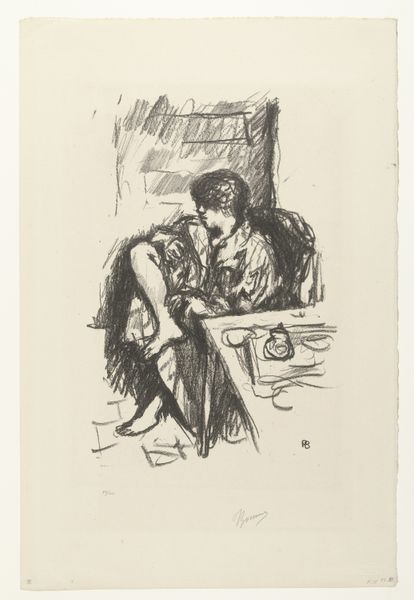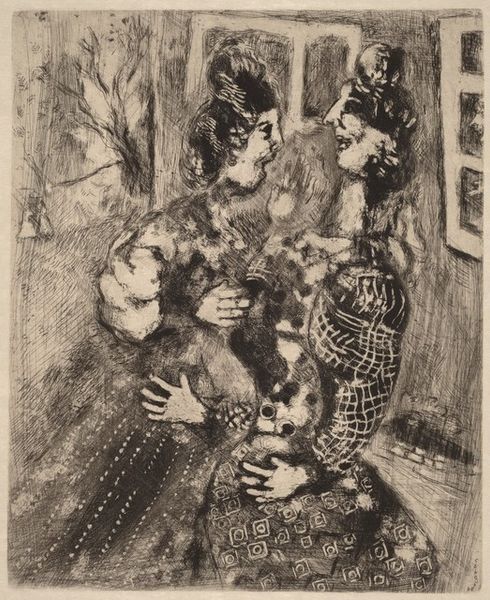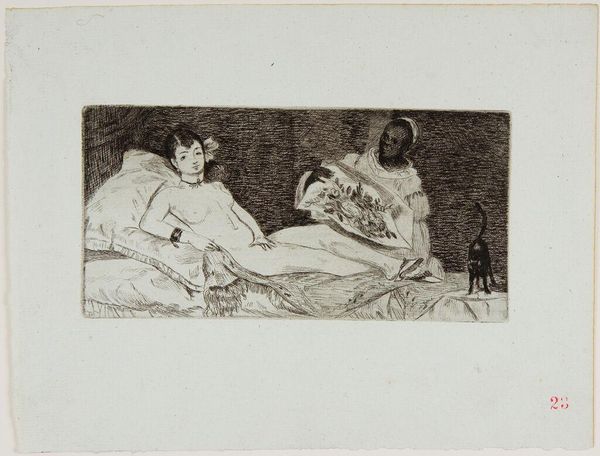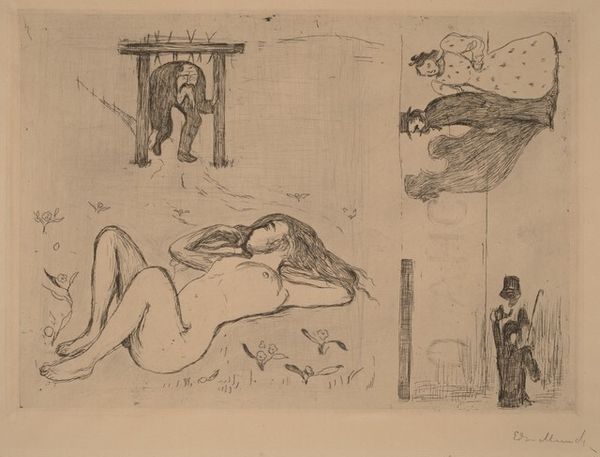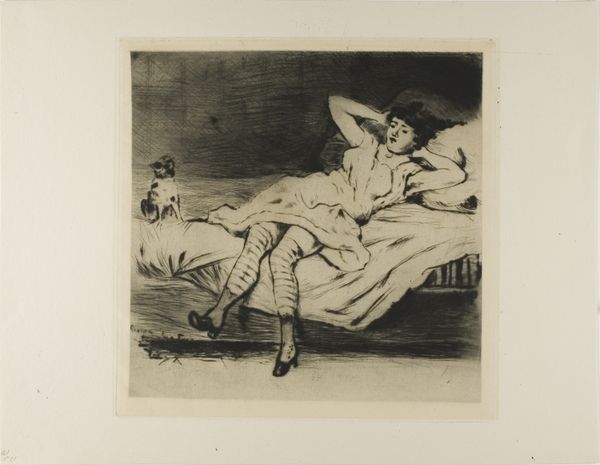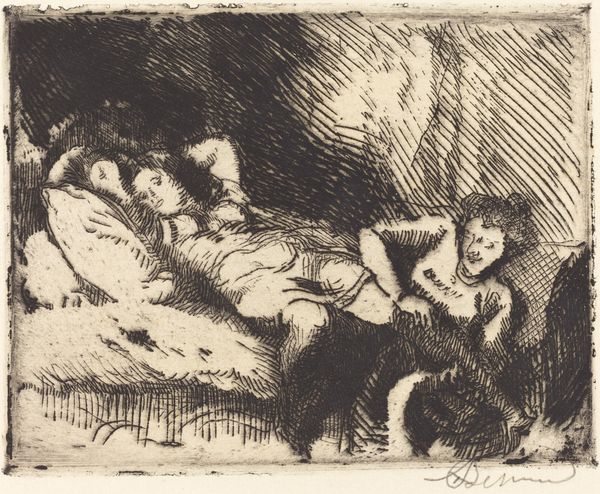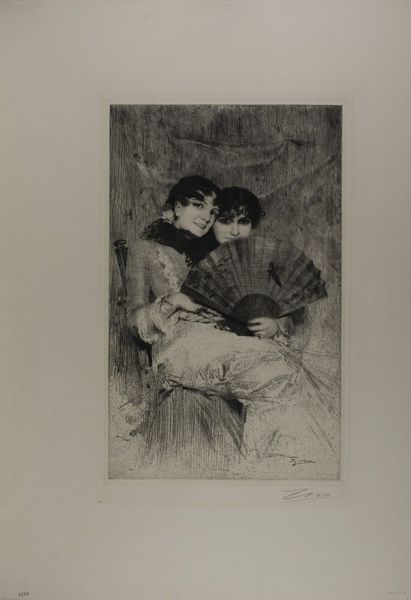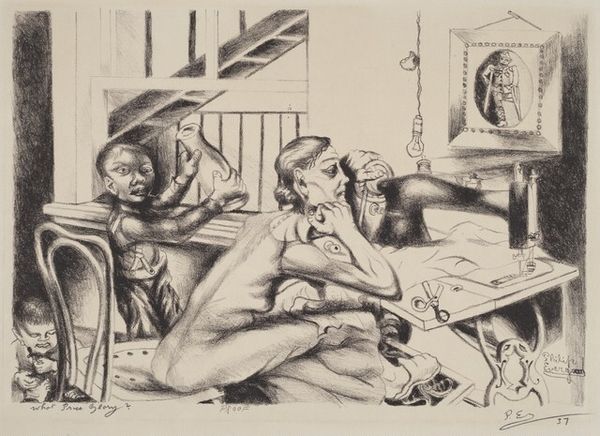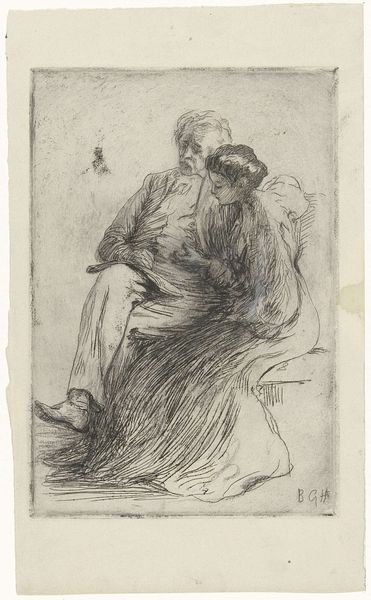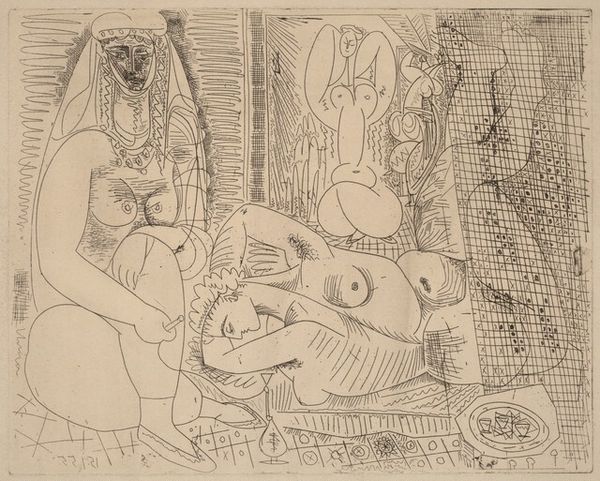
drawing, print, pencil
#
portrait
#
pencil drawn
#
drawing
# print
#
harlem-renaissance
#
charcoal drawing
#
pencil drawing
#
pencil
#
genre-painting
Dimensions: plate: 200 x 252 mm sheet: 255 x 383 mm
Copyright: National Gallery of Art: CC0 1.0
Editor: This is Paul Rohland’s "Home Sweet Home," made in 1928. It looks like a print, maybe pencil or charcoal. There's such a strong sense of domesticity, yet something about the rendering feels almost… melancholy? What do you see in this piece? Curator: Considering the context of the Harlem Renaissance during which Rohland created this print, I'm drawn to examine the means through which this idealized vision of 'home' is materially constructed. We must examine the labor implied here. Consider the clothing, the furniture, even the materials used to create this image itself. What social structures support or constrain their acquisition and enjoyment? Editor: That's interesting. I hadn’t considered the labor involved beyond Rohland creating the work itself. You’re saying the “Home Sweet Home” motto becomes a question about accessibility? Curator: Precisely! And further, about the labor of maintaining a home, of performing domesticity. Look closely at the materials Rohland used: humble graphite on paper, capable of mass reproduction as a print. What statement is he making by choosing these accessible means to depict, potentially, inaccessible aspirations? Editor: I see what you mean. The title’s promise clashes with the almost rough, unfinished feel of the print itself. It’s like he’s highlighting the tension between the ideal and the reality. Curator: It challenges our assumptions about 'fine art' itself. The work democratizes portraiture through material availability while implicitly critiquing societal barriers through nuanced production of luxury for all individuals and families. Rohland pushes beyond mere representation. What do we think he says to the viewer about home in the community? Editor: I hadn't thought of it that way at all. It's much more layered than just a simple scene. It's fascinating to see how the materials themselves become part of the message. Curator: Indeed. Focusing on production processes helps reveal the rich social commentary embedded within seemingly simple domestic scenes.
Comments
No comments
Be the first to comment and join the conversation on the ultimate creative platform.
